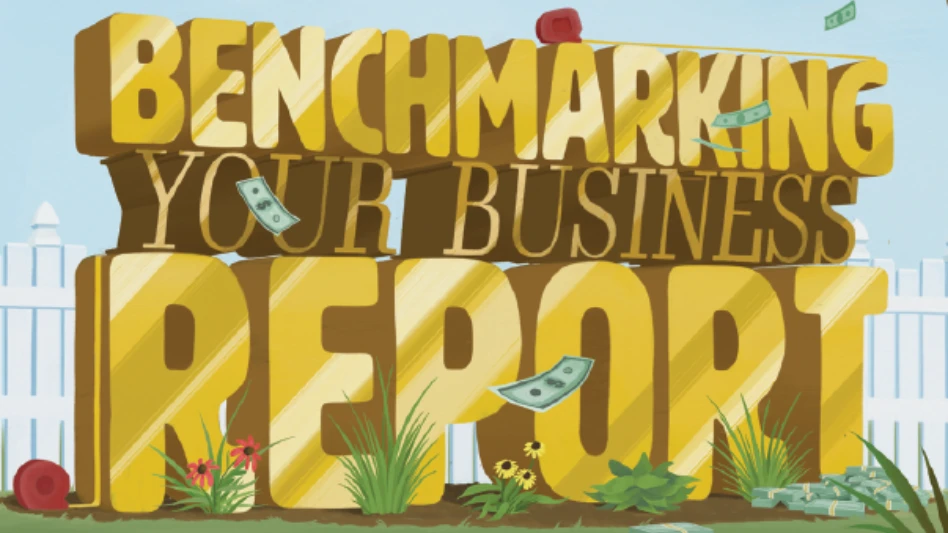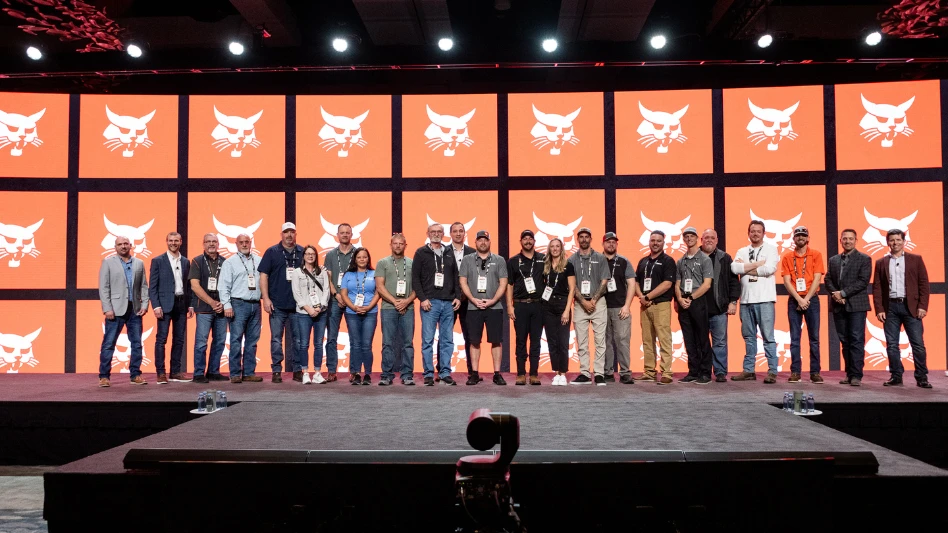When Ron Newberg started offering drip irrigation services 25 years ago, he bought the necessary equipment from a local supplier on an as-needed basis. Now, he needs one or two semitrailers to deliver the necessary materials every two to three months.
The fifth edition of the Irrigation Association handbook, printed in 1983, has information pertaining to drip irrigation scattered throughout its pages. The sixth edition, available in late 2007 or early 2008, will have three chapters dedicated to drip in the landscape and agricultural industries.
Needless to say, microirrigation – the industry’s term for all forms of low-volume irrigation – is growing. And as water restrictions pop up throughout the country, this growth will no doubt continue. Experts estimate drip and other forms of microirrigation use 30 percent less water and are 90 percent more efficient than overhead systems. But additional factors, such as positive client perception and healthier plant material, also contribute to the growth of the microirrigation industry. According to Lawn & Landscape research, 82 percent of contractors use drip or microirrigation products and another 8 percent plan to use them this year.
WHY DRIP? Newberg began his St. Petersburg, Fla.-based business, Newberg Irrigation, 35 years ago and first considered low-volume about 25 years ago. At the time, the decision was aesthetic, he says, as installing drip was a way to eliminate the film overhead sprayers would leave on low-standing office windows. It was also a better way to water hard-to-reach areas like hanging planters.
But as he tries to comply with the ever-emerging codes and restrictions prevalent in South Florida, Newberg says drip has evolved into a water conservation issue. Because of its efficiency, microirrigation is often exempt from the restrictions and watering schedules that irrigation contractors installing conventional systems must abide by.
“Right now, because of the drought, contractors can only irrigate one day a week – except for those offering a form of low-volume, which is unrestricted,” Newberg says. “Now, we have seven days to water everything with low-volume and one day to water with spray.”
From January to May this year, South Florida received only 3 to 4 inches of rain. The area’s summer season brings even less rain, along with hotter temperatures and relatively low humidity. “In these conditions, plant material will die using spray irrigation only once a week,” Newberg says. “Irrigation contractors have basically been backed into a corner – the only way to keep plant material alive around here is with drip. The price of irrigation just went up.”
While the South and West were the first regions to embrace the use of drip, contractors and manufacturers say the service will spread to all parts of the country as people recognize its benefits and water becomes scarcer. “As I talk to irrigation contractors around the country, more and more of them are looking into micro,” says Ronald Sneed, irrigation consultant and Irrigation Association committee chairman, Raleigh, N.C. “For now, the South and the West are seeing more growth than in the East, but I’d say the service as a whole is growing at about 1 percent a year. You can see that by looking at the offerings of any major distributor of irrigation products.”
Awareness contributes to the growth of water-conscious irrigation, as well. Water conservation and other environmental issues are hot topics and more people are aware of what they can do to make less of an impact. “A day doesn’t go by that you don’t see something about water conservation in the newspaper or on the news – there is quite a glut of information reaching homeowners,” Newberg says. “If they hear it from enough sources, they become receptive.”
David Laybourn, senior product manager, Rain Bird, Azusa, Calif., agrees public perception is a main component in the growth of microirrigation and that contractors can use client awareness to their advantage. “A lot of clients have a desire to show a commitment to sustainability and conservation and want to show that in their landscapes,” he says. “They don’t want their neighbors or other businesses to see them wasting water.
“Every contractor should aim to be the first in their area to be recognized as a drip expert,” he adds. “It shows that he or she is ahead of the curve.” Laybourn suggests contractors monitor their first two or three drip irrigation installations, considering costs, materials, problems and solutions, and use the information as case studies when selling future jobs. “Contractors should keep well-documented case studies to show potential customers that it works – and works well – and that they know what they’re doing,” he says. “This expertise can generate great word-of-mouth.”
IRRIGATION INCENTIVES. Drip irrigation applies water directly to a plant’s roots where it is most needed, resulting in virtually no evaporation or water waste. Currently, drip is most often used for plant material with a wide root base, like rows of shrubs and hedges, containers and hanging baskets. It is not ideal for turf because each small area of grass is its own plant with a small root base, and if grass roots plug an emitter, the grass around it suffers, Laybourn says. Future advancements, however, may alleviate this problem.
Drip irrigation provides higher uniformity by applying the same amount of water to every area of a landscape, promoting healthier plant material, Laybourn says. Similarly, drip irrigation caters to landscapes composed of a variety of plant material by programming each control valve to run at different times.
“Turf and plants require different amounts of water and microirrigation allows contractors to water them separately,” Sneed says. “Most of all lawns are multi-landscaped, and drip can eliminate the problem of over or under watering.”
Another reason contractors may opt for microirrigation is the system’s underground installation makes it impervious to vandalism or damage from foot traffic. “A lot of drip systems are out of sight, unlike microsprayers which are exposed,” Sneed says.
The price charged to clients to install a microirrigation system can be about 20 percent more than for a conventional system, Newberg says. Cost factors that often come into play are additional parts, such as filters and flush and air relief valves, as well as the additional labor and necessary training.
While contractors are able to charge the same or more for drip irrigation installation, some manufacturers say a contractor’s costs to install a drip irrigation system vs. a spray system are considerably less – up to 70 percent less depending on the size of the system, says Ben Raines, marketing specialist, DIG Corporation, Vista, Calif. For example, drip irrigation nozzles cost around 50 cents each, while spray heads cost $7 or $8 dollars each, he says. Half-inch drip tubing costs less than 10 cents per foot, while ¾-inch PVC, the standard material for sprinkler system pipes, costs about 68 cents per foot, Raines adds. In terms of labor, drip irrigation installation does not involve digging trenches and can be done with simple handheld tools, Raines says. “There are many factors, such as type of landscape and layout of the land, that can affect the price of an irrigation system installation,” he says. “But the cost of drip irrigation systems can be much less, especially the installation process.”
Laybourn suggests contractors stress the potential long-term savings and the rising costs of water in all areas of the country. “People are coming around to the fact that any irrigation systems installed today will run with water priced at tomorrow’s rate,” he says, comparing the situation to the recent surge in gas prices and the purchasing of fuel-efficient cars.
PIECES AND PARTS. Microirrigation equipment has come a long way. “People used to punch a hole in polyethylene pipe and call it drip irrigation,” Sneed says. While many manufacturers only sell certain pieces of microirrigation systems, he says some companies are trying to provide a full line of equipment to become a drip irrigation one-stop shop. “The industry is maturing and trying to work out the kinks,” Sneed says. “There are a number of manufacturers who will soon do nothing but microirrigation.” A properly installed, well-maintained drip irrigation system with great filtration can last 25 years, he says.
Quality filters are the most important components of drip irrigation systems. The water passageways of drip irrigation systems are quite small, ranging in size from ½ inch to 5/8 inch, so it’s common for systems without proper filtration to clog with bits of rust, sand and other contaminants. There are a few different types of filters, such as mechanical or screen filters, media and disk filters.
Pressure regulators are important to keep the system from busting at the seams. Drip irrigation systems should run no higher than 30 to 40 psi, Laybourn says. “Even if the fittings holding a drip irrigation system together are of good quality, they will fail prematurely and could wash out surrounding plants if they’re under too high of pressure for a long period of time,” he says.
A drip irrigation system uses an emitter to deliver water to the plant. This is where the biggest difference between micro and overhead irrigation systems comes into play because, unlike overhead systems which deliver water in gallons per minute, microirrigation systems deliver water in gallons per hour. There are four main types of low-volume irrigation emitters: inline drip tubing, point source emitters, microsprays and bubblers.
Inline drip tubing has emitters placed regularly throughout the tubing and is usually buried under mulch or just below the soil surface.
Point source emitters are placed externally where they are needed most and are usually used to water individual plants.
Microsprays are small sprayheads located above ground to irrigate areas slightly larger than a plant’s root base and are also often used in beds.
Bubblers emit, or “bubble,” water over an area a few inches wide. This is ideal for areas like containers and planter boxes that require more water than other micro-emitters will allow.
Although different, microirrigation can be a simple way for irrigation contractors to keep their clients’ landscapes looking great despite the obstacles up against them. “It’s really nothing more than a precise application of water at a plant’s roots,” Laybourn says. “But it’s growing faster than any other segment of the irrigation industry.”

Explore the September 2007 Issue
Check out more from this issue and find your next story to read.
Latest from Lawn & Landscape
- The New World Is Green: Grow With Marketing Analytics & AI
- Exmark launches autonomous commercial mower
- North by Northwest's charitable act for the Ronald McDonald House Charities
- Coxreels expands V-100 Series product line
- Landscape Workshop expands with 2 acquisitions
- Wilson360 adds Daniel Grange as new consultant
- Batman and business
- CH Products releases new tree stabilizer





